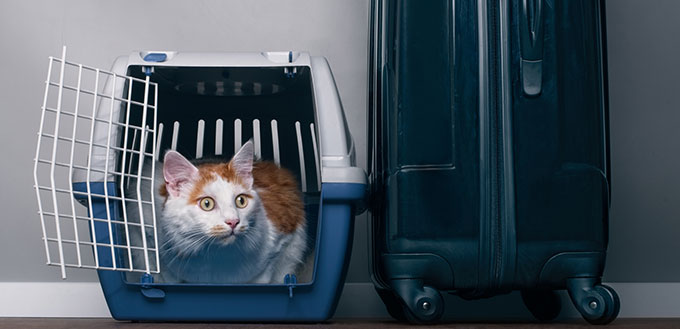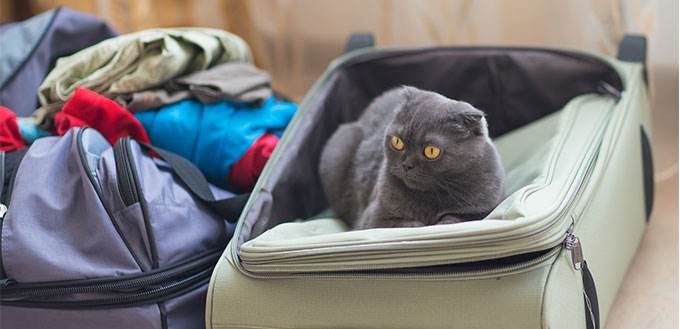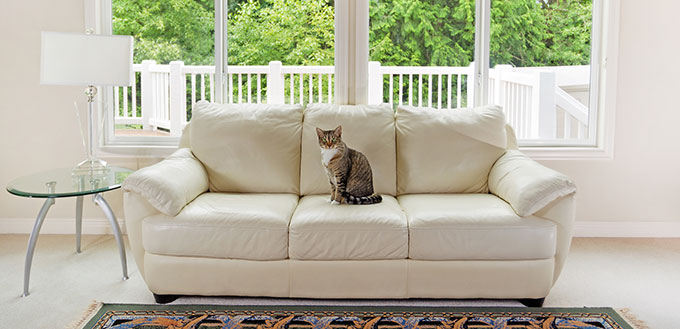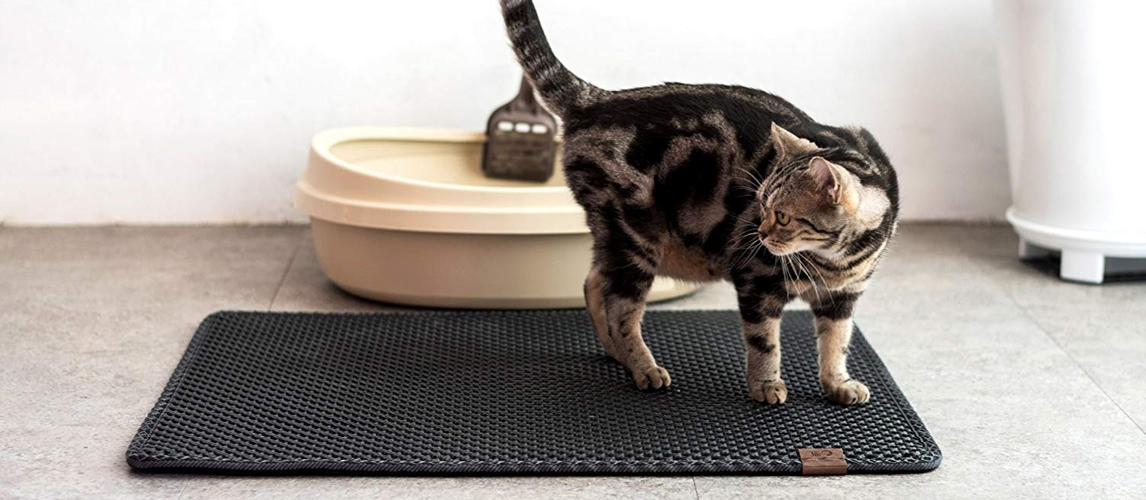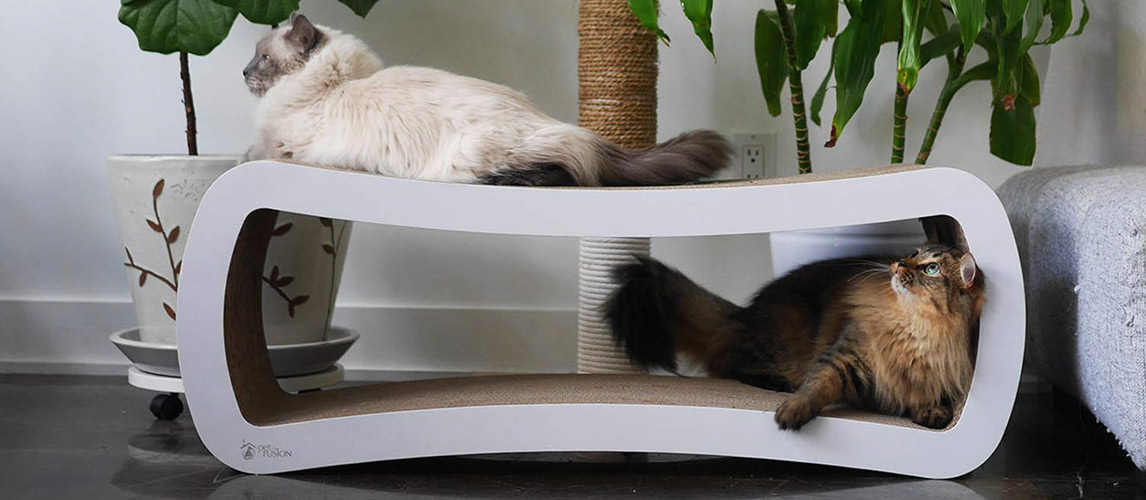Research has revealed that moving home is one of the most stressful life events that a person can go through. If you find it distressing, can you imagine how your poor cat feels about it? Cats are very territorial animals and their well-being is very connected to the environment where they are living. A house move will seriously affect their feeling of safety and security.
There is no way to completely remove all of the stress for your kitty but with some careful planning, you can reduce stress levels to a minimum – for both of you! Moving with a cat can go smoothly if you organize everything in advance.
Options for Moving Home With a Cat
Moving house inevitably involves some uncertainty but if you can plan as much as possible it will make it less stressful for your cat. You can plan the move in two ways. You can book your cat into a residential facility whilst the move takes place or you can keep them with you and they can make the move with the rest of your family.
Booking Your Cat Into a Cattery
The advantage of this option is that you will not have to worry about your cat and can focus on the move itself. However, you are the best judge of your cat’s character. Perhaps they would find the stay in the cattery more stressful than the move itself!
Also, you need to make sure that their vaccinations are up to date so contact the cattery well in advance and ask what they require in terms of health checks and immunizations. You will need to take your cat there the day before the move or even a few days before. Obviously, there will be a fee to pay so it may not be the best option if you are on a tight budget.
Keeping Your Cat With You During the Move
This is the most labor-intensive option and requires a lot of planning from weeks before you move. There is no fixed plan; you will have to devise a strategy that suits you and your cat best. You may need to invest in some equipment but it will not cost as much as residential care for your kitty.
A cat carrier is essential for moving your cat safely from one location to another. There are a lot of myths about how to introduce a cat to a new home but all you need is common sense.
Planning the Move Weeks in Advance
Decide on a room in your house when you can enclose your cat as the move is taking place. Also, look at the plan of your new home and allocate a room there where you will keep your cat as they settle into their new home. The best approach is to choose rooms that are out of the way and that people do not have to walk through to get to other rooms. This will ensure that your kitty is not disturbed and has fewer opportunities to escape.
Between a week and 10 days before the big move, it is time to get your cat used the allocated room. Put all of their ‘things’ in there. This means it should contain their sleeping bed or their kitty blanket, litter tray and feeding bowls, or automatic cat feeders. Start feeding them in there and leaving them in there to sleep at night. If they drink from a cat water fountain, place that in the room too. Your cat will begin to view this room as their safe space.
You will need to invest in a cat carrier if you do not already have one. Put this in the room too so that your kitty can explore it at their leisure and starts to smell familiar to them.
It is also important that you have your cat micro-chipped. Cats are at greatest risk of going missing when they move home so it is important that they can be identified.
Planning the Day Before the Move
Place all of your cat’s remaining belongings in the room. These will be things such as their scratching post and cat toys. Shut your cat into the room too at this stage. If you have more than one cat, remember you will need two feeding bowls and water bowls and two litter trays.
Check out our article on Water Bowl for Cats.
If you have two cats that do not get on, being enclosed in such a small space may be an issue. The only way around this is to allocate them to separate rooms. Synthetic pheromones can be very useful at a time like this and will help your cat to feel calm and reassured. You can obtain them from your vet. Some are provided as a spray and others are a plug-in diffuser.
You may also like our guides on Pheromone Collar for Cats, Cat Pheromone Spray, and Calming Aids for Cats.
On the Day of the Move
Start the day by feeding your cat a small meal but keep them shut in their allocated room. Check that they have fresh water and a clean litter tray and that there are no escape routes such as an open window.
When the entire house is packed up and you are ready to leave, go into the room and put your cat in the cat carrier. It is a good idea to spray it with synthetic pheromones first. Once you are ready to go, place the car carrier safely in the car. If you know that your kitty suffers from travel sickness, do not feed them for a few hours before you leave.
Read here our article on the Best Cat Backpacks.
Settling Into Your New Home
Now that the move is done, you need to know how to acclimate a cat to a new home. Your cat will either arrive directly at your new home with you or will arrive from the cattery. It may help if you leave it a day or so to collect your cat from the cattery so that you can get your belongings sorted. Here are our tips for moving a cat to a new home.
Once your cat is inside your new home, take them straight to their allocated room. Set out all of their belongings just as it was in their room in the old house. Leaving an unwashed item of your own clothing can also help to settle them in because obviously, you cannot stay in the room with them all the time! It is also a good idea to put it in a box or some other item so that they can hide. They need plenty of fresh water, a clean litter tray and a bowl of their usual food. Make sure that you close the door when you leave.
It can be very helpful to use a pheromone product in the room. Also, you may want to give your kitty a helping hand to spread their scent around their new room. Take a clean cloth and wipe it over your cat’s face. It will pick up the scent from your cat’s facial glands. Now, wipe that cloth on the furniture in the room that is about cat height. A cat’s sense of well-being has a lot to do with odors!
Place a note on the outside of the door indicating that it must be kept closed at all times. Make sure that all members of your household and the removal staff know that your cat is in there and that they should not be disturbed.
The Final Steps
Keep your cat in this room for a few days. Once you decide to let them out, make sure that all of the doors and windows are shut tight. Your cat must always have access to their ‘safe’ room so that they can retreat if they need to. It may be useful to repeat the scenting routine around the rest of the house.
Keep your cat inside for at least three weeks. If you let them out before this, they are likely to try to get back to their old home. When you do let them out, make sure that it is just before a mealtime so they will be hungry and more likely to return for food. Never pick them up and throw them out, let them make the decision.
Don’t Forget
There is a lot of administration involved in settling into your new home but don’t forget the paperwork for your cat! You will need to register with a new vet and it may be a good idea to call them to check that your cat has all the vaccinations they need for the new neighborhood. If your kitty has any on-going health issues, you may want to book an initial consultation to arrange for repeat medication and so on.
When you are relocating a cat, you need to inform your microchip company that you have a new address so that you can be quickly traced. It’s also a good idea to introduce yourself to your neighbors in case your kitty ever gets stuck in their garden shed! Once you know how to move with a cat, you won’t be worried about doing it again.
Check out our First Time Cat Owner Checklist.
Sources:
- Debbie Stoewen DVM, MSW, RSW, PhD, Moving to a New Home with Cats, VCA Hospitals
- Moving With Your Pet, The ASPCA
- Moving with a Dog or Cat, Best Friends Animal Society
More Pet Product Reviews
Cat Scratching Towers
Cat Christmas Costumes
Cat Toys
Cat Beds
Automatic Cat Feeders
Cat Water Fountains
Self-Cleaning Litter Boxes
Cat Houses
Cat Hammocks


